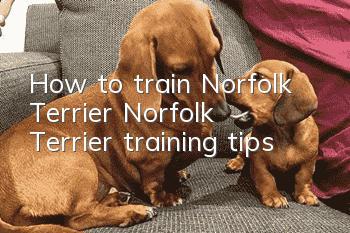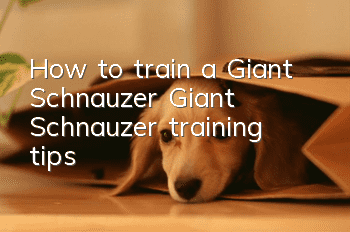How to train Norfolk Terrier Norfolk Terrier training tips

Norfolk Terrier Training Tips:
1. Use guided training methods. The initial stage of training is very important for dogs.
At the beginning, the three-month-old Norfolk Terrier is not very familiar with the training instructions. When you tell it a command, it doesn't understand what it means. This requires the owner to guide it patiently, teach it one by one what to do, and teach it what to do after the command is given.
To give you an example: First, you must prepare a professional dog toilet for the Norfolk Terrier. You can make it yourself or buy a finished product. After preparation, place it in a fixed position and do not move it at will. You can place the dog toilet on the balcony and bathroom. At the same time, pay attention to the Norfolk Terrier's daily defecation. A normal dog's need to urinate and defecate will appear when getting up in the morning, about 15-30 minutes after each drink and meal. Let your dog defecate at a fixed time every day. Training a Norfolk Terrier to use the toilet is a task that must not be stopped midway. Once the dog stops, the habits and awareness formed by the dog may disappear. Once the dog develops bad excretion habits, it will be very difficult for the owner to correct them.
2. Mandatory training, initial training is more commonly used.
At the beginning of training, Great Pyrenees puppies will be uncomfortable and want to escape. Regarding this situation, as the owner, you should not be soft-hearted, but have a tough attitude and force it to be trained. In the future, when the Norfolk Terrier wants to avoid training, the owner can use force to train them well.
For example: barking is a dog’s instinct, without training, but the barking of a dog is annoying. Therefore, barking training is necessary. This kind of training is the basic training of "commanding it to bark and not letting it stop". There are many ways to bark, and it's best to gradually develop a habit of obeying commands. There are many training opportunities in a dog's daily life, such as the dog's joy, anxiety, anticipation, alertness or anger. Dogs that seize the opportunity, issue the "bark" command when the dog "barks", feed it too late, or the dog is tied to a belt, all obedience to the "bark" command can be used as training Chance. When the dog hears the command, it will be rewarded with food, or the way it is restrained, and if it is conscious or unconscious it barks immediately. By persisting for a period of time, you can develop a conditioned reflex and make the "bark" training successful.
3. Seduction training, using toys and food to lure it for training.
This is to increase the dog’s interest in training. Give it the food it likesBe interested in training. This will allow it to be in a good mood to participate in training, and there will be no time when it wants to avoid training. However, when training through induction, the owner must control the level appropriately and not let your pet develop a gluttonous habit. Don’t let it think that training is all about eating delicious food.
For example: take delicious cooked mini meat pieces as bait, squat or stand in front of the dog's nose, and gently place the other hand on the dog's butt, and say when you are ready. Sit down, and at the same time press down the hand on the suit, and at the same time, move the bait slightly towards the front and top of the dog, so that it can raise its head. The dog will naturally sit down, and the owner will count silently. After reaching one, two, and three, he said it was OK, and then he happily praised the dog and said, "Sit down, that's good." At the same time, he gave the dog small pieces of meat to eat.
- How to train an Australian Shepherd to stand? How to train an Australian Shepherd to stand?
- How to prevent heatstroke in Australian Shepherds How to prevent heatstroke in Australian Shepherds
- What medicine should I use if my Australian Shepherd has mites? What medicine should I use if my Australian Shepherd has mites?
- How to Clean Giant Schnauzer Teeth How to Care for Giant Schnauzer Oral Care
- Miniature Basset Griffin Vendeen Hair Trimming Tutorial and Precautions
- Miniature Basset Griffin Vendeen Dog Nail Trimming Method
- Giant Schnauzer fever symptoms and treatments
- What should Bullmastiffs not eat? Key points of feeding taboos for Bullmastiffs
- How to train an Australian Shepherd to lie down? How to train an Australian Shepherd to lie down?
- What vegetables do bullmastiffs eat? Introduction to edible vegetables for bullmastiffs



